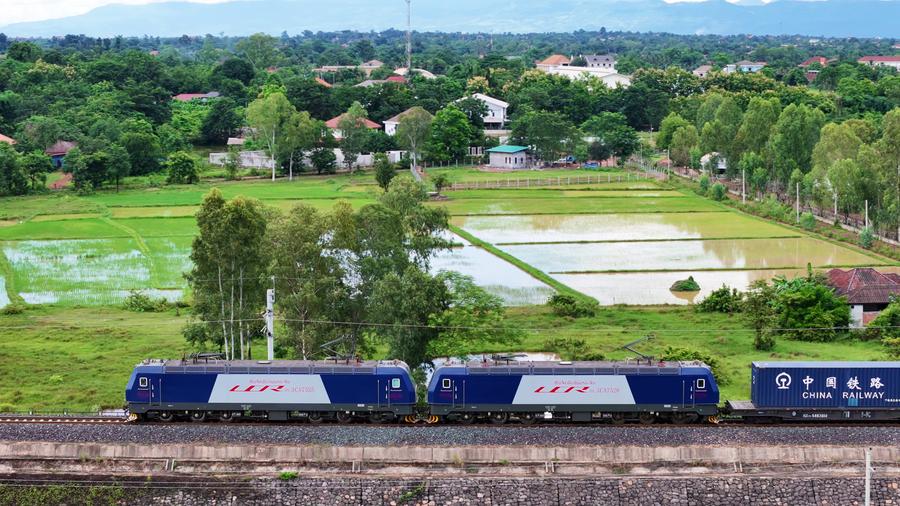Era of Washington-led neoliberal trade order giving way to multipolar global cooperation framework, say experts

Facing fresh US tariff hikes, a logistics hub in Laos is turning challenge into opportunity by leveraging Asia’s enhanced connectivity to expand trade and access new markets.
“We are looking for other alternative markets we have never thought about before,” said Tee Chee Seng, executive director of the Savan Park Special Economic Zone in southern Laos’ Savannakhet Province.
The zone hosts 48 factories that are mainly from France, Italy, Japan, the United States and China. About 10 companies export goods to the US, Tee said. Although the rising tariffs threaten Laos’ exports to the US, they are also encouraging a pivot toward new markets, such as Central Asia and the Middle East, he said.
Tee, who also serves as executive director of Savan Logistics, the operator of the Savannakhet Dry Port, said the company is already facilitating trade with Germany via the China-Laos Railway. The route connects with China’s rail network through Yunnan province and continues westward via Chongqing on the China-Europe freight train.
Since the start of this year, the US has launched a series of aggressive trade measures against Asian countries. Some member states of the Association of Southeast Asian Nations have been especially hit hard.
As country-specific tariffs are set to resume on July 9, many Asian governments are racing to negotiate with Washington amid mounting concerns over the potential blow to trade and growth.
Thailand said its Finance Minister Pichai Chunhavajira was holding trade talks with the US in Washington on July 3, as the country faces a 36 percent tariff on its exports.
US President Donald Trump hinted at a news conference on June 27 that the deadline could be extended.
“No, we can do whatever we want,” he said at the White House when asked if his deadline was set in stone, CNBC reported.
However, in an interview with Fox News on June 29, he said there is no need to extend the deadline.
Under a country-specific tariff list unveiled on April 9, Cambodia faces one of the highest tariffs of 49 percent, followed by Laos (48 percent), Vietnam (46 percent) and Myanmar (44 percent). Singapore, despite a free trade agreement and a trade deficit with the US, is subject to a 10 percent tariff.
Other ASEAN members face rates between 17 and 36 percent.
US allies in Asia — Japan and South Korea — have also been hit with tariffs of 24 and 25 percent, respectively. India faces a 26 percent levy, while Sri Lanka was handed a 44 percent tariff.
There are also a 10 percent baseline tariff and sector-specific levies on items such as steel and aluminum.
Michael Ricafort, chief economist of the Rizal Commercial Banking Corporation in Manila, said the US tariff and trade wars would slow global economic growth, posing particular challenges for export-oriented Asian economies.
Exports to the US are crucial for some countries. In Vietnam, for example, they account for 23 percent of GDP, making the country especially vulnerable, according to a report published by J.P. Morgan Asset Management.
Trump announced on July 2 that Vietnamese goods would be charged a 20 percent tariff, but trans-shipments from third countries through Vietnam will face a 40 percent levy, which is seen as an apparent move targeting products from China. He also added that Vietnam could import US products with a zero percent tariff.
For countries such as Japan and South Korea, the situation is more complex because of their high-tech exports. These products are more difficult for US producers to replace, and the tariff costs can be passed on to buyers more easily, the report said. It added that Australian and Indonesian commodity exporters are also finding it harder to seek alternative sources.
While some major Asian exporters have adopted a wait-and-see attitude, Ricafort said this can restrain new investment and business expansion.
Henry Chan, a distinguished visiting fellow at the Cambodian Center for Regional Studies, said such a high tariff policy would “kill exports if implemented, so all countries are working to avoid it”.
However, he said there are also problems with bilateral negotiations because, without a single guideline, the US might demand varying terms from different counterparties and create uneven playing fields.
The diverse strategies of Asian countries also make their negotiating positions more complex, he said, pointing to reports that Japan wants to include an investment target while India is pushing for a phased implementation.
The unilateral nature of both the tariffs and the negotiations means the US-led neoliberal order is ending, he said. “Like it or not, the world must look for new rules to govern the global order.”
Htin Lynn, a former Myanmar ambassador and executive board member of the Myanmar Institute of Strategic and International Studies, said cooperation frameworks, such as the Regional Comprehensive Economic Partnership and the Lancang-Mekong Cooperation, can help regional countries better cope with the tariff challenges.
The RCEP, comprising 15 Asia-Pacific countries, simplifies trade by offering a unified set of rules and reducing export compliance costs, he said. The LMC, jointly established by China and five Southeast Asian countries, benefits livelihoods and promotes cross-border trade, he added.
Oudet Souvannavong, president of the Lao National Chamber of Commerce and Industry, said China and Laos should join hands to explore new trade opportunities.
“China and Laos can work together in productivity, production and industrial development, as well as high-tech investment, to jointly get into the new markets.”
Southeast Asia, with its increasingly mature markets and expanding middle class, can become a market to focus on, Oudet said.
From the logistics sector, Tee of the Savan Park Special Economic Zone in Laos said what he can only do now is wait and see how things develop while continuing to issue Certificates of Origin for qualified products, which helps the local economy.
Prime Sarmiento in Hong Kong contributed to this story.
Contact the writer at kelly@chinadailyapac.com


